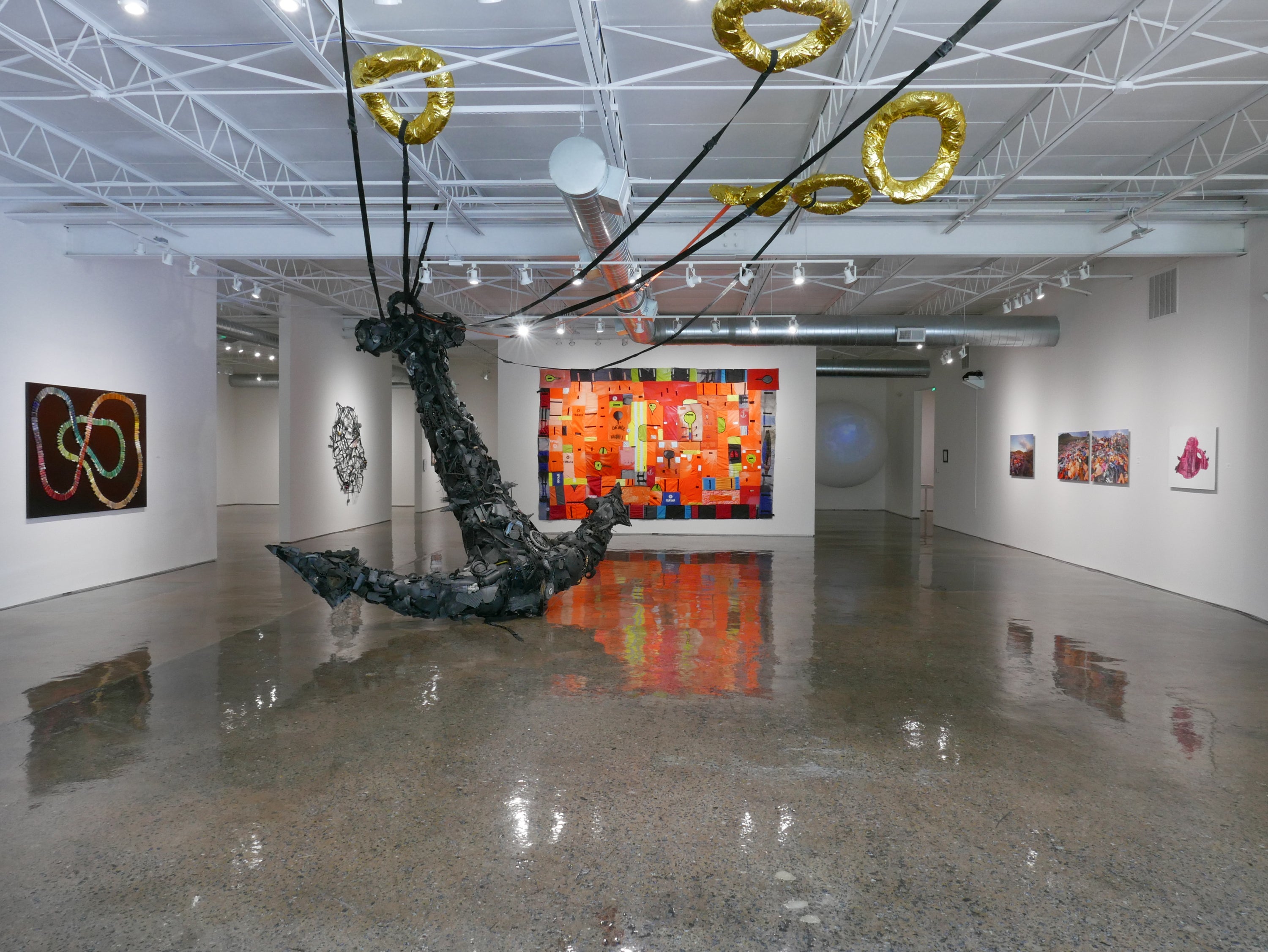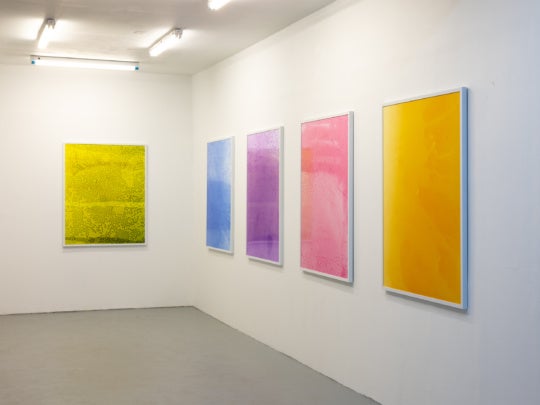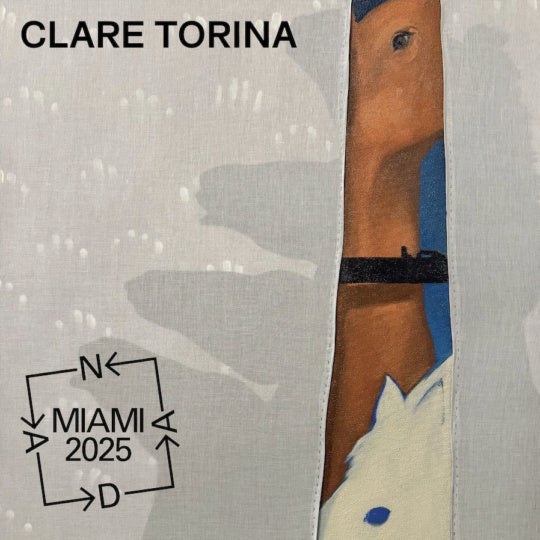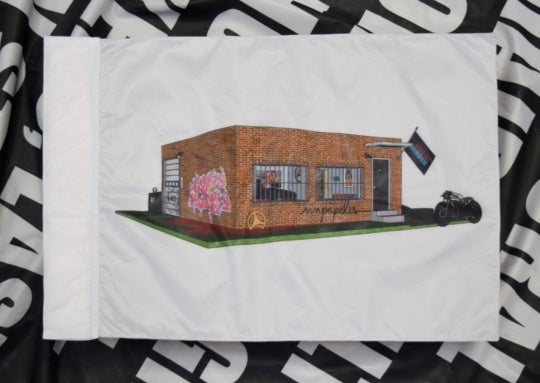
Albatrosses don’t smoke, but their nests often have cigarette lighters in them, carried and consumed by the birds that mistake them for food. Atlanta artist Pam Longobardi used similar lighters — plastic detritus churned up by the ocean — as the primary material in her 2017 work Rainbow’s End, version II, part of her new show at Hathaway Gallery, through September 16.

The strongest pieces in the exhibition similarly utilize found ocean plastic as a medium. The arrangements are static, but their patterns often suggest wavelike movement and the ocean gyres that circulate the debris around the world. The pieces are often beautiful, inevitable reminders of the environmental damage wrought by humans and our non-degradable plastics.
Items for everyday personal use — lighters, bottles, plastic combs, and so on — are the most compelling. Laid bare by the ocean, they appear surprisingly well-worn, used and even loved: in the end, disuse looks identical to use. For her “communicative social sculptures,” as she calls them, Longobardi gathers the materials from shores in Hawaii, California, Spain, Belize, Greece, Costa Rica (she travels to some marvelous places in order to report back that the world is in terrible shape). Her use of color is striking in such works as The Crime of Willful Neglect (for BP) and One World Ocean (Anthropocene hyperobject), but several works in black are less interesting, though fittingly somber and impressively ominous and menacing.

In Flag of Lesvos (anamnesis), she takes on the subject of recent mass refugee migrations in the Mediterranean, a topic which might seem a natural fit due to the common threads of oceanic and geopolitical change, but it proves problematic. For Flag of Lesvos (anamnesis), the artist, with the collaboration of some refugees, gathered discarded life vests and sewed them into a flaglike quilt. Even aesthetically, the themes here seem writ large, semaphoric, over-earnest. I don’t doubt the artist’s sincerity, nor do I dispute the urgency or righteousness of the cause, but placing the vestiges of human misery into the realm of aesthetic consideration and consumption, no matter the context or intent, seems a wrong turn. Artists like Ai Wei Wei have used similar materials, but the work can raise the same questions, especially when placed in the commercial gallery realm.
It’s a common problem: an overconfidence in the beneficence of artistic production itself, a conviction that art stands, almost by definition, in opposition to the destructive forces at play in the world. Longobardi’s otherwise strong and moving photographs documenting the vast mounds of discarded vests become clouded by similar questions.

The gallery seems almost worried that viewers might think the work of New York painter Frank Webster is pretty. His work is exhibited concurrently in an adjacent gallery, so themes of environmental degradation, not otherwise prominent, are highlighted. Printed information tells us that his traditionally executed oil and acrylic paintings of Icelandic landscapes are “permeated with a sense of urgency that is emblematic of our current period of rapid climatic change.” I don’t see it, but they are lovely, even if the blobs of color on the canvases are often too large, giving the images a not-entirely satisfactory pixelated look.

The most impressive works in his show are the unabashedly beautiful smaller watercolors on paper with their airy, light-filled depictions of uninhabited mountains and valleys. The whiteness of snow, clouds or sky is often represented by blank paper. It’s a simple but interesting technique that gives the images a breathy spaciousness, something the larger canvases lack. Here, the massive structure of an icy mountain or frozen lake somehow radiates springlike warmth. It’s a beauty that has no need for a socially redeeming cause to excuse its presence.
Andrew Alexander is an Atlanta-based critic who covers visual art, dance, and theater.




